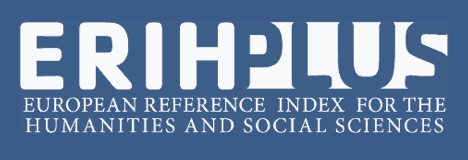Teacher training and geographical education: autonomous field research seeking identify geomorphological risks
Abstract
The current LDB9394 suggests the dissemination of natural disaster prevention mechanisms at all levels of education. The DGEO/FFP/UERJ seeks to train teachers capable of producing methodologies that insert this theme in basic geographic education. The students are oriented to study situations of natural disasters in the RMRJ (where they will probably act as teachers), doing autonomous researches (according to previous orientation) in different neighbourhoods, seeking to understand relations between natural processes and local socio-environmental dynamics. The teaching materials produced (risk prevention booklets, games, workshops, etc.) can be adapted to schools in different locations with similar natural risks, consolidating the educational practice that leads to societies more resilient to disasters caused by extreme natural events.
References
AFONSO. A. E. Contribuições da geografia física para o ensino e aprendizagem geográfica na educação básica. Rev.Eletr.Educação Geográfica em Foco, PUCRJ. V.1, n.2, p.1-10, 2017. Disponível em: http://periodicos.puc-rio.br/index.php/revistaeducacaogeograficaemfoco/article/view/8122. Acesso em: 17 maio 2019.
______. Perspectivas e possibilidades do ensino e da aprendizagem em Geografia Física na Formação de Professores. 236 f. Tese de Doutorado - PPGG, UFRJ, Rio de Janeiro, 2015. Disponível em: http://objdig.ufrj.br/16/teses/826981.pdf. Acesso em: 10 maio 2019.
BRASIL. Lei nº 9.394/1996. Estabelece as diretrizes e bases da educação nacional. Disponível em: http://www.planalto.gov.br/ccivil_03/LEIS/L9394.htm. Acesso em: 13 maio 2019.
_______. Lei nº 12.608/2012. Institui a Política Nacional de Proteção e Defesa Civil - PNPDEC; dispõe sobre o Sistema Nacional de Proteção e Defesa Civil - SINPDEC e o Conselho Nacional de Proteção e Defesa Civil - CONPDEC; autoriza a criação de sistema de informações e monitoramento de desastres; altera as Leis nºs 12.340, de 1º de dezembro de 2010, 10.257, de 10 de julho de 2001, 6.766, de 19 de dezembro de 1979, 8.239, de 4 de outubro de 1991, e 9.394, de 20 de dezembro de 1996; e dá outras providências. Disponível em: http://www.planalto.gov.br/ccivil_03/_Ato2011-2014/2012/Lei/L12608.htm. Acesso em: 17 abr. 2019.
______. Ministério da Educação. Secretaria Executiva. Base Nacional Comum Curricular: Brasília, 2018. Disponível em: http://download.basenacionalcomum.mec.gov.br/. Acesso em: 17 maio 2019.
Carvalho Celso, Macedo Eduardo, Ogura Agostinho. (orgs). Mapeamento de Riscos em Encostas e Margem de Rios. Cap. 7. Gerenciamento de Áreas de Risco: medidas estruturais e não-estruturais. Brasília: Ministério das Cidades; IPT, 2007.
COSTA, H. Causas naturais e fatores agravantes das enchentes. In: COSTA, Helder & TEUBER,Wilfried (org). Enchentes no Estado do Rio de Janeiro – Uma Abordagem Geral. Rio de Janeiro: SEMADS, 2001, p. 03-70. Disponível em: https://www.ebah.com.br/content/ABAAAAlUIAG/enchentes-no-estado-rio-janeiro-livro-8-publicacoes-serla. Acesso em: 13 fev. 2019.
CPRM – Serviço Geológico do Brasil. Comunidade mais segura – Animação. 2018. Disponível em https://video.rnp.br/portal/video.action?idItem=46561. Acesso em: 11 maio 2019.
COMPIANI, Maurício. Geologia/Geociências no Ensino Fundamental e a Formação de Professores. Revista do Instituto de Geociências – USP. Geol. USP Publ. Especial, São Paulo, v.3, p.13-30, setembro 2005. www.revistas.usp.br/gusppe/article/view/45367/48979 Acesso em: 17 maio 2019.
IPT – Inst.Pesq.Tecnológicas. Áreas de Risco: informação para prevenção. 2012. Disponível em:https://www.ipt.br/institucional/campanhas/51prevencao_em_areas_de_riscos_ambientais.htm Acesso em: 9 maio 2019.
PIMENTEL, J.; FERREIRA, C.E.O.; TRABY, R.D.J.; DINIZ, N.C. (orgs) Comunidade mais segura: mudando hábitos e reduzindo os riscos de movimentos de massa e inundações. Rio de Janeiro, CPRM, 2012. Disponível em: http://rigeo.cprm.gov.br/xmlui/bitstream/handle/doc/1277/CART-Comunidade%20Mais%20Segura_CPRM.pdf?sequence=1&isAllowed=y Acesso em: 17 maio 2019.
PROJETO VOLUME VIVO. Entre rios: a urbanização de São Paulo”. 2015. Disponível em: https://www.youtube.com/watch?v=Xi9c_N8uFvY Acesso em: 21 fev. 2019.
SCORTEGAGNA, A. & NEGRÃO, O.B.M. Trabalhos de campo na disciplina de Geologia Introdutória: a saída autônoma e seu papel didático. Terrae Didática, 1: 36-43. Campinas, 2005.
SILVA, J. R & HERCULANO, S.. Rios Urbanos, Microbacias e suas Gentes. Revista VITAS Visões Transdisciplinares sobre Ambiente e Sociedade, ano V, n 9, fev. 2015.
Tominaga, L.K.; Santoro, J.; Amaral, R. (orgs.). Desastres naturais: conhecer para prevenir. São Paulo: Instituto Geológico. 2009. Disponível em: http://www.igeologico.sp.gov.br/downloads/livros/DesastresNaturais.pdf Acesso em: 11 abr. 2019.

This work is licensed under a Creative Commons Attribution-NonCommercial 4.0 International License.
Policy Proposal for Free Access Journals
Authors who publish in this journal agree to the following terms:
a. Authors retain the copyright and grant the journal the right of first publication, with the work simultaneously licensed under the Creative Commons Attribution License which allows the sharing of the work with acknowledgment of the authorship of the work and initial publication in this journal.
b. Authors are authorized to take additional contracts separately, for non-exclusive distribution of the version of the work published in this journal (eg publish in institutional repository or as a book chapter), with acknowledgment of authorship and initial publication in this journal.
c. Authors are allowed and encouraged to publish and distribute their work online (eg in institutional repositories or on their personal page) at any point before or during the editorial process, as this can generate productive changes, as well as increase the impact and The citation of published work (See The Effect of Free Access).





















